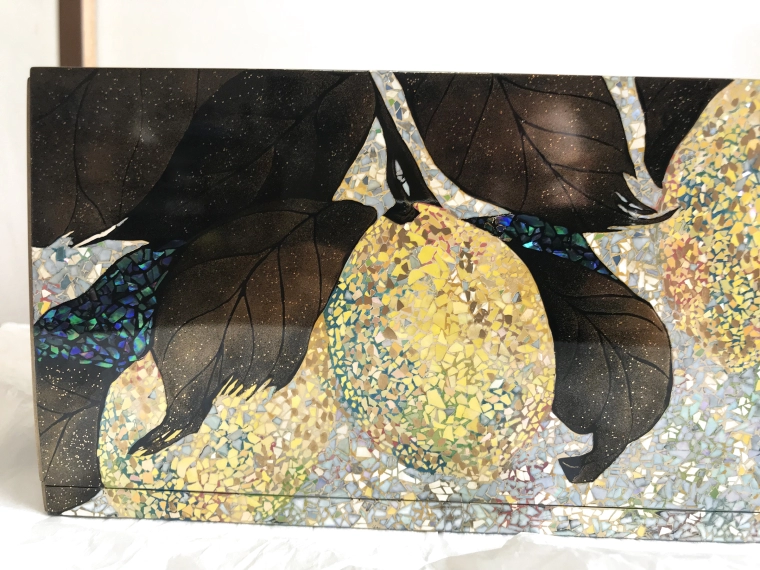Box with Design in Irogai and Makie “Lemon Tree”
H 13.5 x W 32.5 x D 10.5 cm,Year.2015The prices of the artworks on Gallery Japan are determined by the artists themselves and are published directly on the website.
- according to today's currency rate
- shipping fees not included
Shimpei Matsuzaki
1981 -- Lacquerware
- Price Range Please Inquire
- Awards at Japan Kōgei Assoc. Exhibitions : 7
About the Artwork
Expressing lemons ripening in the sunlight using traditional lacquer art decorating techniques, "makie" and "mother-of-pearl inlay" . I used the fusezaishiki technique, which is a technique to color thinly processed white-lipped pearl oyster with color lacquer. With the contrast of the colored white-lipped pearl oyster and black lacquer, I was able to express the vivid colors of the sunlight and lemon motif. I wanted to add some color to the atmosphere with this box by expressing a sense of the season with the colors and freshness of the lemons ripening on the trees.
Description
-
CategoryLacquerware
-
MaterialsUrushi lacquer, Cypress, Black-lipped pearl oyster, Shells, Gold powder, Silver powder, Pigments, Mastic gum
-
DimensionsH 13.5 x W 32.5 x D 10.5 cm
-
Year presented2015
-
RarityUnique
Techniques Used
Maki-e
Maki-e (literally “sprinkled pictures”) is a representative lacquerware technique that originated in Japan around 1,200 years ago. Maki-e is done by painting lacquer motifs on the surface of a piece using a fine brush and then sprinkling gold powder onto the lacquer before it hardens, producing luxurious decorations.
Mother-of-pearl inlay (Raden)
Mother-of-pearl inlay (Raden) is a decorative technique that uses the iridescent inner layer of abalone shell, turban shell, pearl oyster shell, or other mollusk shells. The technique came to Japan from China 1,300 years ago, and pieces featuring mother-of-pearl inlay are included among the artifacts at the Shōsōin Repository in Nara.
Selected exhibitions
- The 62th Japan Traditional Kōgei Exhibition (2015)
- Selected

The prices of the artworks on Gallery Japan are determined by the artists themselves and are published directly on the website.




